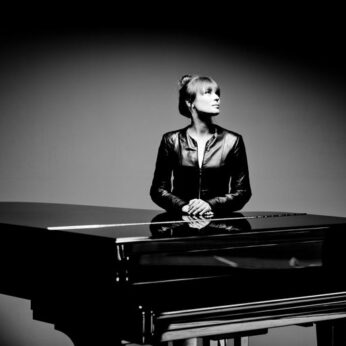Composer: Fryderyk Chopin (b. 1810 - d. 1849)
Performance date: 28/06/2022
Venue: Bantry House
Duration: 00:37:22
Recording Engineer: Eduardo Prado, Ergodos
Instrumentation: pf
Instrumentation Category:Solo
Artists:
Anna Fedorova -
[piano]

Fryderyk Chopin [1810-1849]
The Four Ballades
No 1 in G minor Op.23
No 2 in F major Op.38
No 3 in A flat major Op.47
No 4 in F minor Op.52
The four Ballades were all written in Paris at the peak of Chopin’s career between 1835 and 1842. The term “Ballade” would have been exclusively vocal or literary in the 1830s and Chopin’s use of it would have been the nearest he came to the literary and programmatic style of his contemporaries such as Liszt and Schumann. The folk connotation of the ballad was also one with Chopin’s tendency to elevate popular traditions to a high level of creativity every bit as sophisticated as the piano sonata itself. Indeed the Ballade draws heavily on sonata form. It is through composed with a harmonically directional structure, where variation and transformation are crucial elements. In some ways it represents a reinterpretation of classical sonata form. For instance the Ballades avoid both the double reprise (exposition, repeat and recapitulation) of the classical sonata-allegro and the conventional tonal scheme of the classical exposition. In other words each Ballade delays the resolution of tonal tension until the latest possible moment, usually after the thematic reprise. So the bravura closing sections function as a catharsis, releasing in a whirlwind of musical reckoning all the tension, which has been steadily mounting during the piece.
This leads us to the idea of the plot in a literary ballad where there is a slow build-up of tension culminating in the final denouement. In the same way all the Ballades except the second are heavily end-weighted with an inexorable increase of tension until the tonic key is dramatically reaffirmed. So the very title of Ballade encourages us to look for an unfolding story and to locate the thematic characters in the drama. It is hard to know whether Chopin had any such ideas in his mind, though his close contact with romantic Polish poetry is good ground for suspicion.
The G minor Ballade is a triumph of architecture. The opening motif somehow contains within itself a wonderfully anticipatory character, which dovetails itself into the first theme. This subtle and gracious idea resolves itself in an effervescence of virtuosity before we are inevitably led to the seductive beauties of the second theme and its passionately expressive possibilities. From out of this bursts the pivotal central episode with its character of a quick waltz, which can also be seen as the peak of a triumphant arch to be followed by the mirror reprise of the themes. But that is not of course the end of the story as the main release of tension does not come until the coda with its new material and a climactic close in the tonic.
The F major Ballade is said to tell the story of a town that was engulfed by an enchanted lake. The placid opening Andantino sotto voce reflects the deceptive beauty of the lake at night and the abrupt change from peace to violence Presto con fuoco signify the episodes leading to the Satanic catastrophe. These turbulently contrasted ideas, classic pastoral F major versus Mahlerian angst in A minor, can quickly be seen to contain within their architectural unity far more than a whimsical tale about a magical lake.
The A flat Ballade is one of Chopin’s happiest works, full of brightness and gallantry overflowing with colour and mercurial images. It has the same mirror reprise structure as the First Ballade giving a formal symmetry around a lighter central episode. The reprise has the same feeling of apotheosis but the final culmination is again found in the coda.
The F minor Ballade is one third longer than the others and, if it is possible, seems to have an even deeper poetic resonance than the others. It returns to the thematic ideas of the First Ballade, with a slow waltz first theme and a barcarolle-like second theme and there is a relatively lightweight middle section based on figuration. It is the only Ballade without a mirror reprise but both themes find their apotheosis at their repeat and there is a magnificent bravura coda to conclude the series.
Francis Humphrys
Copyright © 2024 West Cork Music. All rights reserved.
Designed and developed by Matrix Internet